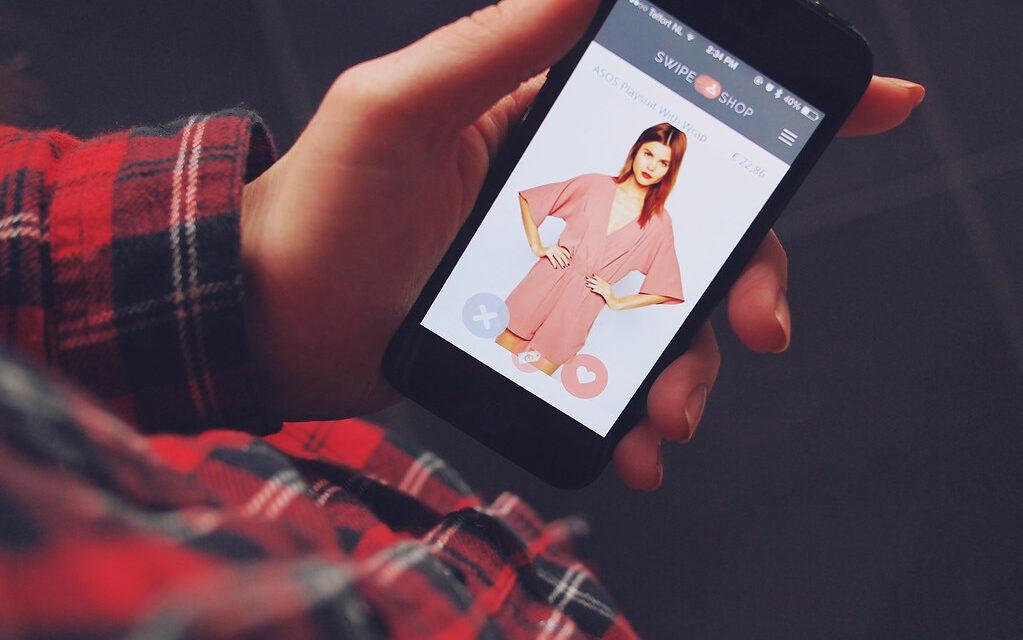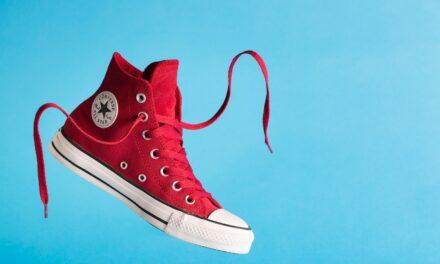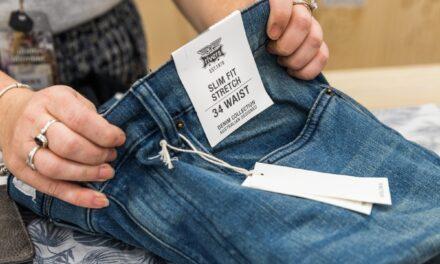Online shopping has become increasingly popular over the years, with more and more people turning to the internet for their purchasing needs. The convenience of being able to shop from anywhere at any time, and the ability to compare prices and products easily, are just a few reasons why online shopping has become a preferred method of shopping for many consumers.
In this article on apps selling clothes you will discover the convenience of buying and selling clothes through apps. From Depop to The RealReal, learn about popular and niche apps in this in-depth guide.
Another contributing factor to the popularity of online shopping is the rise of e-commerce giants such as Amazon and Alibaba, who have made it easier than ever before to purchase products online. These companies have also set a standard for fast shipping and easy returns, making it even more appealing for consumers to shop online.
The fashion industry has not been immune to this shift in consumer behavior, with many brick-and-mortar stores struggling to keep up with the competition posed by online retailers. This has led many fashion brands and retailers to invest heavily in their e-commerce platforms or mobile apps.
The Fashion Industry’s Shift To Mobile Apps
In recent years there has been a significant shift in the way fashion brands sell their products. With more people than ever before using smartphones and tablets, mobile apps have become an increasingly popular way for brands to reach their customers. Apps offer several benefits over traditional websites including faster load times, push notifications that can alert users about new product drops or sales, as well as integration with social media platforms allowing users to share their purchases on sites like Instagram or Facebook.
Many fashion brands have embraced this trend by creating mobile apps that allow customers easy access to their products on-the-go. Some even offer exclusive discounts or early access sales through their app as an incentive for users.
Overall, it is clear that online shopping is here to stay and that mobile apps are becoming an essential part of how people shop. The fashion industry’s shift towards these platforms highlights just how important they are becoming in modern commerce.
Benefits of using clothing selling apps
Convenience and Accessibility
One of the primary benefits of using clothing selling apps is the convenience they offer. Gone are the days when you had to physically go to a store or spend hours browsing through websites to find the perfect piece of clothing.
With the help of these apps, you can shop for clothes from anywhere, at any time. The apps allow you to browse through various categories, filter your search according to your preferences, and purchase items with just a few clicks.
In addition, these apps also offer a great deal of accessibility for users. People with disabilities or those who live in remote areas with limited access to shopping centers can now easily purchase clothes without leaving their homes.
Personalization and Customization
Another significant benefit of using clothing selling apps is personalization and customization options. The majority of these apps allow users to create their profiles and curate collections according to their preferences. They may also be able to follow other users whose style resonates with theirs.
Some clothing selling apps go even further by offering personalized recommendations based on user behavior patterns such as previous purchases, search history, and wishlist items. This level of personalization not only makes it easier for people to find what they like but also gives them an opportunity for self-expression through fashion.
Competitive Pricing
Clothing selling apps often provide competitive pricing due to lower overhead costs compared to brick-and-mortar stores or large e-commerce websites. These savings are passed on directly to customers in many cases.
Sellers on these platforms also have more control over pricing decisions than they would typically have in a physical store environment. As a result, buyers can often find unique pieces at bargain prices that they could not afford otherwise.
Clothing selling apps offer several benefits that make them popular among consumers today: convenience and accessibility, personalization and customization, and competitive pricing. These apps have effectively revolutionized the fashion industry and created a new era of shopping for people who seek hassle-free, convenient ways to shop.
1. Popular Apps Selling Clothes
Online shopping has become increasingly popular in recent years. As a result, the fashion industry has shifted towards mobile apps to cater to the needs of its customers.
Mobile apps provide convenience, easy accessibility, and personalization options for shoppers. There are several popular clothing selling apps on the market that offer unique features and benefits to their users.
Depop
Depop is a fashion marketplace app that allows users to buy and sell new or pre-owned clothing items. The app’s target audience is young adults seeking one-of-a-kind vintage or trendy pieces.
The app works by allowing sellers to create listings for their items, including photos and descriptions of each piece. Buyers can browse through these listings and purchase items they are interested in.
Depop takes a 10% commission fee from each sale made through the app. Depop’s unique features include its social media integration, which allows users to follow other sellers they admire and connect with like-minded individuals interested in specific fashion styles or trends.
Additionally, Depop offers personalized recommendations based on user interests and browsing history. Many sellers on Depop have turned their hobby into a successful business venture.
For example, Emma Warren started her vintage clothing store on Depop as a side hustle while studying at university. The success of her store has allowed her to quit her day job and focus solely on her Depop business.
Poshmark
Poshmark is another popular clothing selling app that offers a more mainstream selection of clothing items than Depop does. The app allows users to buy and sell new or gently used clothes from well-known brands.
Sellers create listings for their items by uploading photos and descriptions onto the app, while buyers can browse through these listings using filters such as brand, size, color, etc., making it easier for them to find what they’re looking for. Poshmark’s unique features include its in-app social community, which allows users to follow and engage with other members.
Additionally, Poshmark offers a feature called “Posh Parties,” where buyers can shop for specific styles or brands at designated times while engaging with other users. Many successful sellers on Poshmark have shared their success stories on the app’s blog.
For example, full-time nurse Amanda Weiss started selling her clothes on Poshmark as a hobby to make some extra cash. Her business took off, and she now makes more selling clothes on the app than she does as a nurse.
Overall, both Depop and Poshmark offer unique features that cater to their specific target audiences. These apps provide excellent opportunities for individuals looking to sell their clothes or start an online business.
2. Niche Clothing Selling Apps
The RealReal: The Luxury Resale Marketplace
The RealReal is a niche clothing selling app that specializes in the resale of luxury fashion items. The app operates as an online marketplace, connecting sellers with buyers who are looking for high-end fashion at discounted prices. The process begins with sellers submitting their items to The RealReal, which are then authenticated by a team of experts to ensure their authenticity.
Once authenticated, the items are listed on the app for sale, where buyers can browse and purchase them at a fraction of their original retail price. One of the unique features of The RealReal is its emphasis on sustainability and eco-friendliness.
By promoting the resale of luxury goods, the app helps to reduce waste and promote a more sustainable fashion industry. The RealReal also offers several features that make it stand out from other clothing selling apps.
For example, buyers can add items to their “obsessions” list, which sends them alerts when similar items become available on the app. Additionally, sellers have access to detailed analytics that allow them to track their sales performance and adjust pricing accordingly.
Success stories from The RealReal sellers are abundant; one seller reported making over $10k in just two months by selling her designer handbags through the platform. Overall, The RealReal is an excellent option for anyone looking to sell or buy luxury fashion in an eco-friendly way.
ThredUp: Secondhand Fashion for All
ThredUp is another niche clothing selling app that focuses on secondhand fashion for all ages and sizes. Unlike other secondhand retailers that require sellers to take photos and list their own clothes, ThredUp offers a “Clean Out Kit” service where they send you prepaid bags or boxes to fill up with your gently-used clothes. Once received by ThredUp’s team, they sort through your items and determine which ones are in sellable condition.
They then photograph, price, and list your items on the app. ThredUp offers a wide range of clothing options, including high-end designer brands such as Gucci and Prada.
One unique feature of ThredUp is its “Goody Boxes” service which allows customers to receive a box full of clothes handpicked by stylists based on their personal preferences. Customers can try on the clothes at home before deciding what to keep or return.
ThredUp also offers buyers the option to shop sustainably through their “Rescue Box” program. For each Rescue Box purchased, ThredUp donates an amount of clothing to those in need.
Success stories from ThredUp sellers include a woman who made over $1k in just one month selling her old clothes through the app. Overall, ThredUp is an excellent option for anyone looking for an easy way to sell their gently-used clothes or buy affordable secondhand fashion for all ages and sizes.
3. Rarely Known Small Details About Clothing Selling Apps
The Impact of Social Media
One rarely known fact about clothing selling apps is the important role that social media plays in their success. Many clothing selling apps rely heavily on social media platforms like Instagram and Facebook to build their brand and drive traffic to their app.
For instance, Depop has a strong presence on Instagram with over 4 million followers, where they showcase popular items for sale and feature successful sellers. Poshmark also encourages its users to share listings on social media to increase visibility.
Security Measures
Another aspect of clothing selling apps that is often overlooked is the security measures they have in place to protect both buyers and sellers. Most reputable clothing selling apps have built-in safety features such as secure payment options, fraud monitoring systems, and user ratings and reviews. For example, ThredUp employs a team of experts who inspect every item for quality before it’s listed for sale to ensure buyers receive accurate descriptions.
Environmental Sustainability
Many clothing selling apps are also committed to promoting environmental sustainability by encouraging users to buy secondhand clothes instead of contributing to the fast fashion industry’s negative impact on the environment. The RealReal takes this commitment a step further by partnering with luxury brands like Stella McCartney and Gucci to offer sustainable fashion options made from eco-friendly materials.
Conclusion
Clothing selling apps have become increasingly popular due to their convenience, accessibility, and personalized features. While there are several popular apps available such as Depop and Poshmark, it’s essential not to overlook niche apps like The RealReal and ThredUp that specialize in specific areas such as luxury fashion resale or sustainable secondhand fashion for all ages and sizes.
Overall, these niche apps offer unique features that make them stand out from others in the market. The RealReal promotes eco-friendliness by reselling luxury goods while offering detailed analytics for sellers.
In contrast, ThredUp takes care of the selling process itself by offering Clean Out Kits along with a stylist feature called Goody Boxes. These features make it easier for users to sell their old clothes while promoting sustainable shopping practices that benefit everyone involved.
Ultimately choosing which app best suits you depends on personal preference, whether you’re selling items or shopping for new ones. However, whichever app you choose, you’ll be able to benefit from the many features and success stories that come with clothing selling apps.
Apps selling clothes have revolutionized the way we shop for fashion. They offer convenience, personalization, customization, competitive pricing, security measures, environmental sustainability initiatives among many other benefits which are often unknown or overlooked by consumers.
It’s clear that these apps are here to stay as more people choose them as their preferred method of shopping for clothes online. With their skyrocketing popularity in recent years proves the success of these mobile applications; it’s likely that we will see even more innovations in the future.











